Water Management
Storm Water Management in Landscape Design
Bio-retention is a newer concept for managing storm water. It utilizes landscape areas rather than detention ponds to detain and filter the storm water. The primary advantages over the standard “pipe and pond” approach are being able to maintain the pre-development site hydrology and remove pollutants from the storm water prior to discharging from the site. Usually, the cost savings from eliminating storm sewer structures and detention basins on the site will pay for the cost of special soils in the bio-retention areas of the landscape.
Most commercial projects handle storm water with either an unsightly detention basin or with storage on or below the parking lot. The photos (above & below) of North Center Medical, show how a far better alternative, bio-retention, utilizes the landscape to detain and filter the storm water. Most visitors see the beautiful garden spaces without realizing they are detention basins.
The rain water from the roof, sidewalks, and some of the rear parking lot drains into three bio-retention areas: the employee garden at the northeast corner of the building, the lawn east of the rear parking lot, and the front entrance garden. The fountain is supplied with rain water from the roof. Rain first fills the fountain basin and any surplus water flows into the bio-retention area.
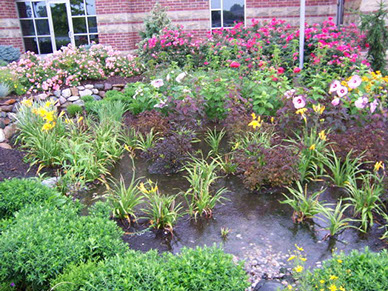
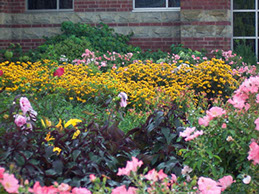
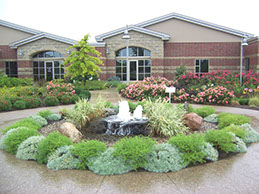
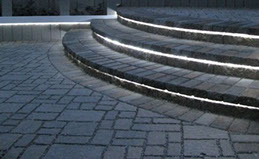
Bio-Retention
is a proven but relatively new system that utilizes the landscape for managing storm water. This can truly be a “win-win” situation:
- The need for a separate (and unsightly) detention basin is reduced or eliminated. Instead, there is a beautiful landscape that filters the runoff water before it leaves the site
- The area required for storm water management also provides the landscape plantings that ordinances usually require.
- The need for landscape irrigation is often reduced or eliminated.
- You will be on the cutting edge of environmentally friendly technology. With a bit of promotion, this could be a very good public relations tool for you and your clients.
- This can eliminate most or all of the catch basins in the parking lot. As a result, your pavements will hold up better and be easier to maintain.
- Systems to filter the storm water runoff will soon be required by Phase II NPDES regulations. By being proactive with our site design, we eliminate unnecessary delays and expense during the approval process.
- The cost of the additional landscape plantings is more than balanced by the reduced infrastructure need.
PERMEABLE INTERLOCKING CONCRETE PAVERS (PICP)
This system of gapped pavers, laid over a specially-designed base course, will allow rainwater to flow down through the paver joints. This eliminates runoff from the surface of the pavement in the summer and helps to minimize the formation of ice in the winter. Stormwater is stored in the voids of the base course material until it infiltrates into the subgrade. The EPA recognizes permeable paving as a BMP (best management practice) for non-point source pollutants.
Waste Water Management in the Landscape
As an alternative to a conventional septic field, you may want to consider a sub-surface flow wetland. This is a much more environmentally sound approach to handling waste water than a septic field.
The constructed wetland actually CLEANS the waste water before releasing it to a drain field. There is no odor or open water. In fact, the treatment area looks like a garden space filled with water loving perennials.
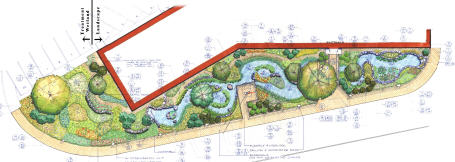
The principle is very simple. The waste water flows horizontally through a gravel bed with plants growing in it. The plant roots filter the water and remove the nutrients. The plants also help support the growth of beneficial bacteria. The bacteria break down the waste products into a form that the plants can use.
Covering this gravel bed is an insulating blanket of peat moss. The peat moss keeps the bed warm enough during the winter that it still works effectively. It also keeps any odors from escaping.
You will still need a septic tank and drain field, but this drain field will be half the normal size. Unlike other engineered systems, there is no mechanical equipment to operate or maintain. The costs are similar to other engineered waste water disposal systems.
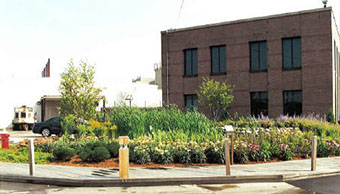
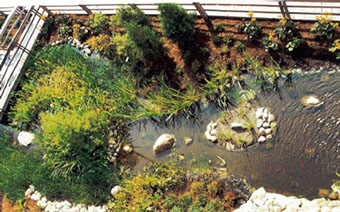
©2017 Designscapes | Proudly Powered by Blue Thumb Digital
